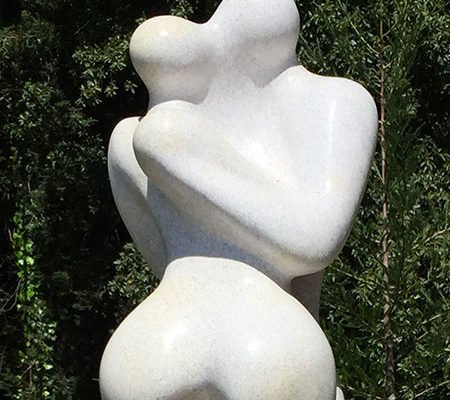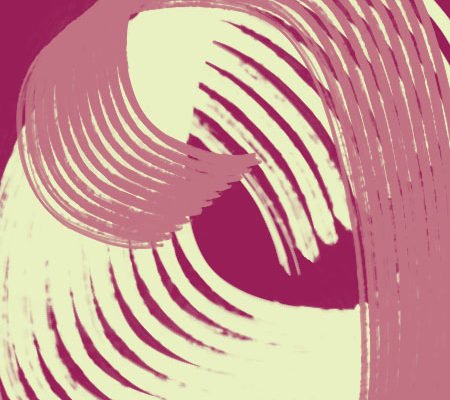 https://aipcf.net/wp-content/uploads/2017/02/couple-1.jpg
450
450
AIPCF
http://aipcf.net/wp-content/uploads/2017/02/logo-aipcf11.png
AIPCF2017-04-03 00:54:532017-05-11 15:00:13Theory and technique of couple psychoanalysis
https://aipcf.net/wp-content/uploads/2017/02/couple-1.jpg
450
450
AIPCF
http://aipcf.net/wp-content/uploads/2017/02/logo-aipcf11.png
AIPCF2017-04-03 00:54:532017-05-11 15:00:13Theory and technique of couple psychoanalysisCouples and Family Psychoanalytical Therapy Models
Psychoanalytic Intervention models with the parental couple
Daniela Lucarelli, Gabriela Tavazza
‘’Parental ‘’ and ‘’parenting’’ are relatively recent terms in psychoanalytic language. They come from the word “parent”- the one who engenders-, In current language they are used to describe the psychical process through which we become parents. The ability to have children does not provide us with a parental identity. Parenting refers to a psychic function that does not correspond to the biological one. In a broad sense we can say that it is the ability to foster growth in another individual (Tavazza, 2006)
According to A. Giannakoulas (1996) parenting is not an add on to a current state. Rather it modifies the personalities of the parents and of the couple in a profound and enduring manner. We shifted from the early psychoanalytic solutions offered for these difficulties. Parents used to be considered as obstacles to the therapy (A. Freud 1927) or that we should obtain their passive collaboration without questions or involvement. (Klein 1927)
Changes in psychoanalytic thought and in research account for the fact that today, we welcome the presence of parents in the treatment of children, adolescents and in cases of serious pathology. We moved from instinct theory and a monadic concept of the psychic apparatus to a relational approach and we ended up, after passing through object relations’ theory to the concept of the psyche as a group (Kaês 1976) to link theory (Pichon-Rivière 1979) to Sullivan’s (1953) interpersonal theory and to Anzieu’s (1975) idea of interfantasy. Over the course of time thinking on space occupied by the real and fantasized figures of the parents (Eiguer, 1987) was modified in the psychoanalytic treatment (de l’age évolutif)
Those who have worked with children and adolescents will have recognized the importance of the existence of a psychic space in the parental couple in order to permit the child’s individuation. The treatment of the parental couple is a must. It is essential to the child’s treatment when the child has become the external object upon which split parental aspects are projected as a result of crisscrossed projective identifications: these are the basis of the couple’s collusion. Otherwise, the child risks remaining a hostage of the couple in order to maintain their collusion (Dicks 1967).
On a clinical level, this perspective has led to including parents in different degrees in the therapy up to thinking that parents must be include in all therapeutic interventions with children
According to Nicolo (2000) in order to work with parents we need to use other analytic concepts that the dyadic parent-child and shift to observing links and the quality of affects between individuals. In addition to the experience of the relationship to the mother and the father, there is also the child’s experience to the couple. The feeling of failure or inability is dealt with in the parenting approach. The therapeutic process will contain theses feeling of failure and ineptness and will validate and recognize parenting capacity. As a result, the couple’s therapist will reactivates a more symbolic parenting process. The therapist situates the child amidst the parents’ and the couple’s emotional relations so that the child can be the subject/object of his own desire and that of his parents.
In the past the various therapeutic strategies were aimed at improving the therapeutic alliance in order to sustain the child’s therapy. It was thought that the parent’s collaboration would diminish their difficulties in accepting the internal restructuring and inevitable changes that accompanied them and as such would avoid the risk of treatment interruption.
More recently the objectives that have emerged are chiefly to sustain parental functioning (Rustin 2000), to reduce parental projections on children by dealing with mourning and with guilt. to foster the complementarity of needs rather than opposing desires and needs (Bonfiglio et al, 2002), to help parents survive their children’s attacks without retaliation, to accompany and to sustain awareness and development of reparation skills (Norsa, 2004), to revitalize the necessary links that foster good family function such as solidarity in the couple and attachment between parents and children.
If in the past we considered parental collaboration necessary to the treatment. The current approach sees them as patients who also need a space in which to deposit their suffering.
It is equally important to distinguish the marital couple from the parental couple, as that permits to ascertain sexual and generational differences.
A.M. Pandolfi and S Taccani (1996) suggest excluding the marital component in parental couple therapy “even when it is evident that the couple’s internal difficulties are strongly present, even when there is strong evidence that the internal parental difficulties emerge from the couple’s marital problems and proceed to the parental register through a collusive agreement.” Norsa, on the other hand ( 2004) reminds us that the quality of the marital link can function as a container for the partner’s interpsychic conflicts and that it provides affective support that can carry the parenting task. In the end it is important to favor taking care of oneself in order to take care of the other.
Bibliography
Anzieu D. (1975), Le groupe et l’inconscient, Paris, Dunod.
Bonfiglio S. et al. (2002), La specificità del lavoro con i genitori di adolescenti : dai ‘genitori sulla soglia’ ad una ‘stanza per i genitori’. L’elaborazione del lutto in Quaderni di Psicoterapia infantile,43, Borla, Roma.
Dicks H. (1967), Marital Tensions. Clinical studies towards a psycho-analytic theory of interaction, Routledge & Kegan Paul.
Eiguer A. (1987), La parenté fantasmatique, Paris, Dunod. Traduzione italiana, Roma, Borla, 1989; traduçao portuguesa, Sao Paulo, 1989 ; traducción española, Buenos Aires, Amorrortu, 1990.
Freud A. (1927), The Psycho-Analytical Treatment of Children, Imago Publishing Co., London, 1946.
Giannakoulas A. (1996), Corteggiamento, innamoramento, amore e genitorialità in ‘Curare la relazione. Saggi sulla psicoanalisi e la coppia’ a cura di A. Nicolò, Franco Angeli, Milano,1996.
Kaës R. (1976), L’appareil psychique groupal. Constructions du groupe. Dunod,. Paris.
Klein M. (1927), Contributo a un simposio sull’analisi infantile in ‘Scritti’ 1921-1958, Boringhieri, Torino, 1978.
Lucarelli D., Tabanelli L. (2006), Neither actual nor inner. The construction of a potential space for parenthood in the therapeutic relationship with parents of child or adolescent in psychoanalytic treatment. Presented in the Fifth Conference of the Child and Adolescence Section of the EFPP, Berlin, nov. 2006.
Nicolò A.M. (2000), Il lavoro con i genitori e/o famiglie di adolescenti, présenté à Padoue en janvier 2000.
Norsa D. (2004), Disfunzioni della genitorialità e ansie riparative in ‘Uno spazio per i genitori’, Quaderni di psicoterapia infantile, Borla, Roma.
Pandolfi A.-M., Taccani S (1996), Il trattamento della coppia dei genitori, in ‘Curare la relazione’ a cura di A.-M. Nicolò, Franco Angeli, Milano.
Pichon-Rivière E. (1979), Teoría del vinculo, Buenos Aires, Nueva Visiòn.
Rustin M. (2000), Dialogues with parents in ‘Work with parents : Psychoanalytic Psychotherapy with Children and adolescents, Karnac Books, London.
Sullivan H.S. (1953), The interpersonal theory of psychiatry, Norton, New York.
Tavazza G. (2006), La funzione genitoriale tra stabilità e cambiamento, pubblicato sul sito web del Centro Psicoanalitico di Firenze della S.P.I.
See also
 https://aipcf.net/wp-content/uploads/2017/02/couple-1.jpg
450
450
AIPCF
http://aipcf.net/wp-content/uploads/2017/02/logo-aipcf11.png
AIPCF2017-04-03 00:54:532017-05-11 15:00:13Theory and technique of couple psychoanalysis
https://aipcf.net/wp-content/uploads/2017/02/couple-1.jpg
450
450
AIPCF
http://aipcf.net/wp-content/uploads/2017/02/logo-aipcf11.png
AIPCF2017-04-03 00:54:532017-05-11 15:00:13Theory and technique of couple psychoanalysis https://aipcf.net/wp-content/uploads/2017/02/couple-4.jpg
450
450
AIPCF
http://aipcf.net/wp-content/uploads/2017/02/logo-aipcf11.png
AIPCF2017-04-03 00:52:492017-05-11 15:02:41Psychoanalytic psychotherapy of the couple and attachment
https://aipcf.net/wp-content/uploads/2017/02/couple-4.jpg
450
450
AIPCF
http://aipcf.net/wp-content/uploads/2017/02/logo-aipcf11.png
AIPCF2017-04-03 00:52:492017-05-11 15:02:41Psychoanalytic psychotherapy of the couple and attachment https://aipcf.net/wp-content/uploads/2017/02/Modeles3.jpg
450
450
AIPCF
http://aipcf.net/wp-content/uploads/2017/02/logo-aipcf11.png
AIPCF2017-04-03 00:50:522017-05-11 15:05:21The place and the practice of CFPT prenatally (before and after birth)
https://aipcf.net/wp-content/uploads/2017/02/Modeles3.jpg
450
450
AIPCF
http://aipcf.net/wp-content/uploads/2017/02/logo-aipcf11.png
AIPCF2017-04-03 00:50:522017-05-11 15:05:21The place and the practice of CFPT prenatally (before and after birth) https://aipcf.net/wp-content/uploads/2017/02/COUPLE-2.jpg
450
450
AIPCF
http://aipcf.net/wp-content/uploads/2017/02/logo-aipcf11.png
AIPCF2017-04-03 00:44:402017-05-11 15:06:24Psychoanalytic Intervention models with the parental couple
https://aipcf.net/wp-content/uploads/2017/02/COUPLE-2.jpg
450
450
AIPCF
http://aipcf.net/wp-content/uploads/2017/02/logo-aipcf11.png
AIPCF2017-04-03 00:44:402017-05-11 15:06:24Psychoanalytic Intervention models with the parental couple https://aipcf.net/wp-content/uploads/2017/02/Modeles5.jpg
450
450
AIPCF
http://aipcf.net/wp-content/uploads/2017/02/logo-aipcf11.png
AIPCF2017-04-03 00:42:422017-05-11 15:08:28The model of Interfantasmatization. The Relational Psychic Apparatus in families, couples and groups.
https://aipcf.net/wp-content/uploads/2017/02/Modeles5.jpg
450
450
AIPCF
http://aipcf.net/wp-content/uploads/2017/02/logo-aipcf11.png
AIPCF2017-04-03 00:42:422017-05-11 15:08:28The model of Interfantasmatization. The Relational Psychic Apparatus in families, couples and groups. https://aipcf.net/wp-content/uploads/2017/05/Famille-1.jpg
500
500
AIPCF
http://aipcf.net/wp-content/uploads/2017/02/logo-aipcf11.png
AIPCF2017-04-03 00:40:442017-05-11 15:10:32Le groupe multi-familial psychanalytique (G.M.F.P.)
https://aipcf.net/wp-content/uploads/2017/05/Famille-1.jpg
500
500
AIPCF
http://aipcf.net/wp-content/uploads/2017/02/logo-aipcf11.png
AIPCF2017-04-03 00:40:442017-05-11 15:10:32Le groupe multi-familial psychanalytique (G.M.F.P.) https://aipcf.net/wp-content/uploads/2017/02/couple3.jpg
450
450
AIPCF
http://aipcf.net/wp-content/uploads/2017/02/logo-aipcf11.png
AIPCF2017-04-03 00:38:472017-05-11 15:26:17The soma is individual; the psyche is essentially a group
https://aipcf.net/wp-content/uploads/2017/02/couple3.jpg
450
450
AIPCF
http://aipcf.net/wp-content/uploads/2017/02/logo-aipcf11.png
AIPCF2017-04-03 00:38:472017-05-11 15:26:17The soma is individual; the psyche is essentially a group https://aipcf.net/wp-content/uploads/2017/02/Modeles8.jpg
450
450
AIPCF
http://aipcf.net/wp-content/uploads/2017/02/logo-aipcf11.png
AIPCF2017-04-03 00:35:542017-05-11 15:22:20Specific nature of our model within the context of PCFT: Field link and co therapy using psychoanalytic psychodrama.
https://aipcf.net/wp-content/uploads/2017/02/Modeles8.jpg
450
450
AIPCF
http://aipcf.net/wp-content/uploads/2017/02/logo-aipcf11.png
AIPCF2017-04-03 00:35:542017-05-11 15:22:20Specific nature of our model within the context of PCFT: Field link and co therapy using psychoanalytic psychodrama. https://aipcf.net/wp-content/uploads/2017/02/lolo_ipi.gif
148
177
AIPCF
http://aipcf.net/wp-content/uploads/2017/02/logo-aipcf11.png
AIPCF2017-02-22 11:23:312017-05-11 15:24:48IPI’s way of working
https://aipcf.net/wp-content/uploads/2017/02/lolo_ipi.gif
148
177
AIPCF
http://aipcf.net/wp-content/uploads/2017/02/logo-aipcf11.png
AIPCF2017-02-22 11:23:312017-05-11 15:24:48IPI’s way of working




